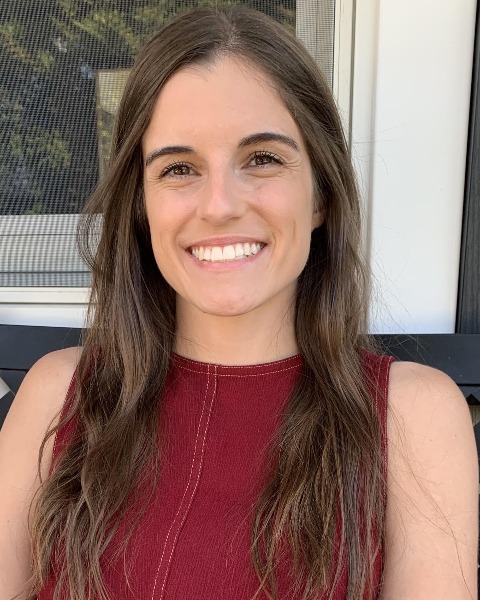Category: Autism Spectrum and Developmental Disorders
Symposium 3 - Developing Inclusive Clinical Research and Practice for Neurodivergent Youth
Level of Familiarity: 90 minutes
Recommended Readings: Doyle, N. (2020). Neurodiversity at work: a biopsychosocial model and the impact on working adults. British Medical Bulletin, 135(1), 108., Bitsko, R. H., Claussen, A. H., Lichstein, J., Black, L. I., Jones, S. E., Danielson, M. L., ... & Meyer, L. N. (2022). Mental health surveillance among children—United States, 2013–2019. MMWR supplements, 71(2), 1., Li, C., & He, W. Q. (2022). Trends in Autism Spectrum Disorder Among Children and Adolescents in the US From 2016 to 2020. JAMA pediatrics, 176(12), 1270-1271., ,
-
CK
Connor Kerns, Ph.D.
The University of British Columbia
Vancouver, British Columbia, Canada -
EK
Elliot Keenan, B.A. (he/him/his)
UCLA
Setauket-East Setauket, New York -
CK
Connor Kerns, Ph.D.
The University of British Columbia
Vancouver, British Columbia, Canada -

Hannah Morton, Ph.D. (she/her/hers)
Postdoctoral Fellow
Oregon Health and Science University
Portland, Oregon -

Jacquelyn Gates, M.A. (she/her/hers)
Clinical Psychology Graduate Student
Stony Brook Universiry
Astoria, New York -
CM
Caroline Miller, M.A. (she/her/hers)
Graduate Student
The University of British Columbia
Vancouver, British Columbia, Canada
Chair(s)
Discussant(s)
Presenter(s)
Neurodiversity is a term coined to emphasize that diverse ways of learning and thinking are valuable, just as biodiversity is considered valuable (Doyle, 2020). The term was developed to encourage society to recognize and develop the strengths (not only the challenges) of neurodivergent individuals or neurominorities – that is, individuals with statistically uncommon neurodevelopmental profiles, such as those on the autism spectrum or those diagnosed with attention deficit-hyperactivity disorder (ADHD; Boyle, 2020). The prevalence of individuals with these particular neurodivergent profiles is also growing. Autism and ADHD are currently estimated to occur in approximately 2-3% and 9-10% of children in the US respectively (Bitsko et al., 2022; Li & He, 2022). As such, there is a growing need to develop approaches in clinical research and practice that are working toward greater inclusion of neurodivergent individuals, for example, by seeking to better understand neurodivergent experiences and abilities in order to inform clinical theories and interventions or by shifting the focus of intervention outcomes to emphasize the strengths of neurodivergent youth and their inclusion in social groups.
The present symposium highlights findings from four independent research groups spanning the United States and Canada that illustrate how neurodivergent perspectives and neurodiversity-affirming approaches can enhance the sensitivity, nuance and social validity of clinical assessment tools and our evaluation of treatment effects. Our first talk offers data on the frequencies and traumatic impact of both traditional and autism-related adversities using a novel, autism-tailored adversity measure in a large community sample of autistic youth. Our second study builds upon this work by examining the relationship between a particularly prevalent and impactful form of adversity, bullying, using a measure of peer victimization, also expressly designed for autistic and ADHD youth. The second half of the symposium will turn towards intervention. Specifically, our third talk explores how examining social outcomes in an idiographic manner, that considers strengths as well as challenges, may both affirm the value of neurodiversity as well as reveal hidden benefits of a social skills intervention. Our last talk reveals the notable complexity of efforts to improve the social adjustment and inclusion of ADHD youth using a classroom-based psychosocial intervention. Finally, our discussant, an autistic researcher with a focus on the intersection of mental health and neurodiversity, will critically evaluate these studies and their implications for future clinical research and practice.
Learning Objectives:
- Describe distinct stressors, particularly social stressors, that neurodivergent are likely to experience and measures that assess them.
- Describe what an idiographic treatment outcome is and how it may help identify relative strengths and growth in neurodivergent youth.
- Identify an unintended effect of teachers providing praise and positive attention to ADHD youth at school.
- Describe what kinds of adversities parents identify as most prevalent and upsetting for their autistic children.
- Describe the benefits gained by using measures tailored to the perspectives and experiences of neurodivergent youth.

